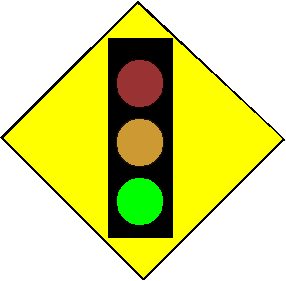|
According to U.S. News & World Report, Best Technology Jobs of 2019 ranked by high-paying jobs that boast low unemployment rates are as follows:
- Software Developer: C++, Java, C#, PHP, etc.
- Computer Systems Analyst
- IT Managers
- Information Security Analyst
- Database Administrator (and Developer): Oracle, MySQL, MongoDB, SQLite, Access, etc.
- Web Developer: HTML, CSS, JavaScript, ASP.NET, Visual Basic, PHP, etc.
| Syllabus: Fall 2019 |
|
Credit hours: 3 |
| Class times: 03:30pm – 04:45pm, TuTh |
Classroom: Collaborative Energy Complex 205 |
|
|
| Instructor: Wen-Chen Hu (my teaching philosophy)
|
Office: Upson II 366K |
| Office hours: 02:00pm – 03:00pm, MoWeFr, or simply dropping in |
Email: wenchen@cs.und.edu |
|
|
| Prerequisite: CSci161 Computer Science II or consent of instructor |
|
|
| Lecture notes:
No textbook will be used.
Instead detailed and precise class instructions and interactive, informative, and practical lecture notes (based on W3Schools, ASP.NET, and other online documents and user manuals) will be provided.
Collectively, the lecture notes and instructions are more like a small book, which supplies much more information than regular notes do and makes the subject studies much easier.
Students will not have problem learning the subjects or taking the exams after studying them and doing programming exercises.
|
|
|
| Remark I: Definitions, terminologies, and theories will be discussed minimally in this course.
Instead practical works and programming knowledge will be emphasized and enforced.
|
|
|
| Remark II: Online asynchronous is also provided for the distance students.
It is conducted fully through Internet instruction.
For details, check UND Online & Distance Education or DEDP (Distance Engineering Degree Program).
Besides, YuJa is used for hosting and sharing lecture videos, and ProctorU is used to monitor the exams.
|
|
|
| Instructor’s qualification:
The instructor initiated a database-driven web system by using Perl and Sybase in 1997, when not many people were familiar with the Web.
Ever since, numerous software and tools such as ASP.NET, LAMP, and Oracle have been used by him to build various web systems.
In addition, the instructor has been teaching this course for more than 10 years.
|
University of North Dakota Course Description —
An introduction to Microsoft .NET and World Wide Web programming for fundamental web content development.
Topics including Microsoft .NET concepts, World Wide Web basics, web system structures, technology survey, client-side languages such as (X)HTML and VBScript, server-side languages such as ASP.NET but no database processing, web-host connection, and web content design and development.
Wikipedia —
The Microsoft .NET Framework is a software framework that can be installed on computers running Microsoft Windows operating systems.
It includes a large library of coded solutions to library programming problems and a virtual machine that manages the execution of programs written specifically for the framework.
The .NET Framework is a Microsoft offering and is intended to be used by most new applications created for the Windows platform.
World Wide Web Programming —
Web programming is to design and implement web content.
It consists of two kinds of programming:
- Client-side programming, which is to develop software running on client computers/browsers.
The popular client-side languages include CSS, DOM, (X)HTML, JavaScript, XML, XSL(T), etc.
- Server-side programming, which is to develop software running on servers.
The software normally receives requests from browsers and sends the results from databases/files/programs back to the browsers for display.
The popular server-side languages include C/C++, Java, Perl, PHP, etc.
PC Magazine —
World Wide Web programming is to write the necessary source code to create a web site.
At the very least, it refers to writing the HTML pages.
However, most web sites also use JavaScript in their HTML pages, and any web site that provides searches, access to databases or any custom processing for the user requires additional programs that run in the web server.
Web server processing is programmed in Java, VBScript, Perl and other languages.
A Generic Three-Tiered Client-Server Web System Structure —

An Internet-Enabled and Mobile Database Course Sequence —
This is part of an Internet-enabled and mobile database course sequence offered by me:
CSci260 .NET and World Wide Web Programming
⇓
CSci457 Electronic Commerce Systems
⇓
CSci513 Advanced Database Systems
⇓
CSci515 Data Engineering and Management
The following platforms, software, and tools used in these courses greatly help students look for jobs:
- CSci260 (.NET and World Wide Web Programming) to build database-driven websites by using
- Microsoft Access database,
- Microsoft ASP.NET,
- Microsoft C# or Visual Basic,
- Microsoft .NET, and
- Microsoft Visual Studio.
- CSci457 (Electronic Commerce Systems) to build electronic and mobile commerce systems by using
- Android programming,
- Android-server-database connection,
- (L) Linux operating system,
- (A) Apache web server,
- (M) MySQL database, and
- (P) PHP.
- CSci513 (Advanced Database Systems) to build Internet-enabled and embedded database systems by using
- Android programming,
- Android SQLite embedded database,
- JDBC (Java Database Connectivity),
- object-relational SQL and PL/SQL, and
- Oracle (an object-relational database).
- CSci515 (Data Engineering and Management) to build location-based services and data-mining systems to discover knowledge from a large set of data by using
- Android programming,
- Android Google APIs and Firebase database,
- data mining and knowledge discovery,
- information retrieval,
- location-based services, and
- smartphones and mobile handheld devices.
Grading:
Announcements:
- Thursday, December 19: Final Exam to be held
- Thursday, December 12: Final Exam Question Distribution posted
- Thursday, November 21: Exam II to be held
- Tuesday, November 12: Exam II Question Distribution posted
- Thursday, December 12: Programming Exercise IV due in class
- Tuesday, November 05: Programming Exercise IV posted
- Thursday, November 14: Programming Exercise III due in class
- Tuesday, October 01: Programming Exercise III posted
- Thursday, October 10: Exam I to be held
- Thursday, September 26: Exam I Question Distribution posted
- Tuesday, October 08: Programming Exercise II due in class
- Tuesday, September 17: Programming Exercise II posted
- Tuesday, September 24: Programming Exercise I due in class
- Thursday, September 05: Programming Exercise I posted
- Monday, August 26: Register this course via Course Registration.
Tentative Schedule:
Week
|
Class |
Topic |
Exercise |
Due |
Where |
| 1 |
08/27
08/29 |
1. Introduction |
|
|
|
| 1.1 Course outline |
|
|
|
| 1.2 System overview |
|
|
|
| 1.3 Technology survey |
|
|
|
| 2 |
09/03
09/05 |
2. HTML (HyperText Markup Language) |
|
|
|
| 2.1 Programming Exercise I |
Exercise I |
|
|
| 2.2 HTML tags |
|
|
|
| 2.3 HTML examples |
|
|
|
| 09/04 |
Last day to add a course or drop without record
Last day to add audit or change to/from audit
Last day to receive a refund on a dropped class
Drops after the last day to add will appear on a transcript.
|
|
|
|
| 3 |
09/10
09/12 |
3. XHTML (eXtensible HTML) |
|
|
|
| 3.1 Why XHTML |
|
|
|
| 3.2 XHTML syntax |
|
|
|
| 3.3 HTML5 |
|
|
|
| 4 |
09/17
09/19 |
4. CSS (Cascading Style Sheet) |
|
|
|
| 4.1 CSS basics and syntax |
Exercise II |
|
|
| 4.2 CSS text and fonts |
|
|
|
| 4.3 CSS links and lists |
|
|
|
| 5 |
09/24
09/26 |
5. CSS (Cont.) |
|
|
|
| 5.1 CSS box model and border |
|
Exercise I |
|
| 5.2 CSS pseudo- class and element |
|
|
|
| 5.3 CSS navigation bar and images |
|
|
|
| 6 |
10/01
10/03 |
6. Programming Exercise III |
|
|
|
| 6.1 Specifications |
Exercise III |
|
|
| 6.2 ASP.NET programming |
|
|
|
| 6.3 ASP.NET and Access databases |
|
|
|
| 7 |
10/08 |
7. Databases and SQL |
|
|
|
| 7.1 Introduction to databases |
|
Exercise II |
|
| 7.2 SQL (Structured Query Language) |
|
|
|
| 7.3 Embedding SQL in ASP.NET |
|
|
|
| 10/10 |
 Exam I (Thursday)
Exam I (Thursday) |
|
|
|
| 8 |
10/15
10/17 |
8. C# for ASP.NET |
|
|
|
| 8.1 Getting started with C# |
|
|
|
| 8.2 C# code samples |
|
|
|
| 8.3 C# data types and variables |
|
|
|
| 9 |
10/22
10/24 |
9. C# for ASP.NET (cont.) |
|
|
|
| 9.1 C# control structures |
|
|
|
| 9.2 C# functions |
|
|
|
| 9.3 C# arrays |
|
|
|
| 10 |
10/29
10/31 |
10. ASP.NET: A Database Example |
|
|
|
| 10.1 User interface construction |
Exercise IV |
|
|
| 10.2 ASP.NET-Access connection |
|
|
|
| 10.3 ASP.NET programming |
|
|
|
| 11 |
11/05
11/07 |
11. ASP.NET: Essentials |
|
|
|
| 11.1 Getting started with ASP.NET |
|
|
|
| 11.2 Dynamic user interface |
|
|
|
| 11.3 Request methods and page navigation |
|
|
|
| 12 |
11/12
11/14 |
12. ASP.NET: Critical Controls |
|
|
|
| 12.1 Text boxes |
|
|
|
| 12.2 Radio buttons |
|
|
|
| 12.3 Hidden fields |
|
Exercise III |
|
| 11/15 |
Last day to change to or from S/U grading
Last day to change to or from audit grading
Last day to drop a full-term course or withdraw from school
|
|
|
|
| 13 |
11/19 |
13. ASP.NET: Server Controls |
|
|
|
| 13.1 HTML server controls |
|
|
|
| 13.2 Web server controls |
|
|
|
| 11/21 |
 Exam II (Thursday)
Exam II (Thursday) |
|
|
|
| 14 |
11/26 |
14. ASP.NET: Data Binding |
|
|
|
| 14.1 Data binding |
|
|
|
| 14.2 List controls |
|
|
|
| 11/28 |
 Thanksgiving Recess (Thursday) — no classes
Thanksgiving Recess (Thursday) — no classes |
|
|
|
| 15 |
12/03
12/05 |
15. The World Wide Web |
|
|
|
| 15.1 Web introduction |
|
|
|
| 15.2 Web terminology |
|
|
|
| 15.3 Web basics |
|
|
|
| 16 |
12/10
12/12 |
16. Microsoft .NET |
|
|
|
| 16.1 Microsoft .NET introduction |
|
|
|
| 16.2 Microsoft .NET software |
|
|
|
| 16.3 Microsoft .NET framework |
|
Exercise IV |
We’re here. |
| 17 |
12/19 |
 Final exam (05:30pm – 07:30pm, Thursday)
Final exam (05:30pm – 07:30pm, Thursday) |
|
|
|
| 18 |
12/24 |
Grades posted before noon, Tuesday |
|
|
|
|


 Exam I (Thursday)
Exam I (Thursday) Thanksgiving Recess (Thursday) — no classes
Thanksgiving Recess (Thursday) — no classes